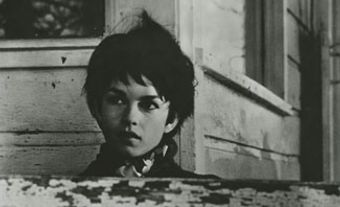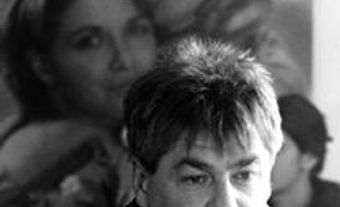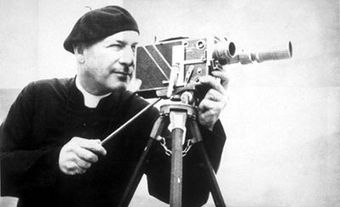
One of the most highly-regarded debut features in Canadian history, Phillip Borsos’ The Grey Fox tells the true story of “gentleman bandit” Bill Miner (Richard Farnsworth), who is credited with committing Canada’s first train robbery. A key film in Canadian cinema, this gentle, revisionist Western was nominated for two Golden Globes and won seven Genie Awards, including best picture, direction, supporting actress (Jackie Burroughs) and original screenplay.
Synopsis
Bill Miner (Richard Farnsworth) is released from a United States prison in 1901 after serving 33 years for robbing stagecoaches. Unable to assimilate into a changed world, he finds inspiration in Edwin S. Porter’s The Great Train Robbery (1903) and decides to rob trains. Following a botched train robbery in Washington State, he escapes to Canada and settles in Kamloops, British Columbia, posing as a mining engineer from Idaho. He gains an ally in the local North-West Mounted Police sergeant (Timothy Webber) and a lover in Kate Flynn (Jackie Burroughs), a proto-feminist and photographer. He is pursued by a Pinkerton agent (Gary Reineke) and his relationship with Kate makes him contemplate changing his ways. But after a final, unsuccessful job, Miner is captured and sentenced to prison.
Analysis
The Grey Fox (1982), Phillip Borsos’ first feature film, builds on the ambivalent fascination many Canadians have for the United States. A Canadian rendition of the Western, it revolves around an outlaw who is invested with charisma and a mythical aura by the Canadians he meets. Borsos' film tells an identifiably Canadian story with a visual style that exploits the terrain of the British Columbia interior and reinforces the idea of a remote landscape as a significant feature in Canadian culture. It also strives for an uncommon sense of historical authenticity, taking lines of dialogue directly from court transcripts and testimonies of the time and shooting in locations where the actual events took place. One of Miner’s own guns was even used by Farnsworth in the film, on loan from the Kamloops Museum & Archives.
Critical Reception
The Grey Fox was distributed internationally, rare for an English-Canadian film at that time, and met with modest acclaim. American critic Roger Ebert hailed it as “one of the loveliest adventures of the year” and praised Farnsworth’s “unstudied, graceful, absolutely natural” performance, while Variety called it “graceful” and “stunningly-photographed.” The film’s television premiere on the CBC reportedly drew an audience of over two million people.
The online film review aggregator Rotten Tomatoes lists The Grey Fox with a rare 100 per cent approval rating. In a 2012 review, Film Threat’s Phil Hall called it “one of the finest films of the 1980s and one of the greatest films made in Canada,” while The New York Times recognized it as an “elegiac, low-key tale about real-life bandit Bill Miner that has become a classic of Canadian cinema.”
Honours and Significance
The first feature film from Western Canada to gain wide acclaim since Back to God’s Country (1919), The Grey Fox was a key film in the development of the Canadian film industry. Released at the end of the “tax-shelter era,” a period typified by derivative, cheaply produced B-movies designed for American consumption, the film indicated that Canadians could indeed produce distinct, English-language films of high quality. It also announced the presence of a major new filmmaker in Phillip Borsos, and became one of the most successful debut features in Canadian history. It dominated the 1983 Genie Awards, earning 12 nominations and winning seven awards, including best picture, direction and screenplay. It also earned Golden Globe nominations for Best Foreign Film and for Farnsworth’s performance.
In 2001, The Grey Fox was named a Masterwork by the Audio-Visual Preservation Trust, and received a special screening at the Toronto International Film Festival (TIFF) to mark the film’s 20th anniversary. It was ranked No. 5 and No. 8 in lists of the Top 10 Canadian Films of All Time issued by TIFF in 1984 and 1993 respectively.
See also: Canadian Feature Films; The History of the Canadian Film Industry.
Awards
Best Movie Script (John Hunter), Western Writers of America (1979)
Best Canadian Film, Montréal World Film Festival (1982)
Best Motion Picture, Genie Awards (1983)
Performance by an Actress in a Supporting Role (Jackie Burroughs), Genie Awards (1983)
Best Performance by a Foreign Actor (Richard Farnsworth), Genie Awards (1983)
Achievement in Direction (Phillip Borsos), Genie Awards (1983)
Best Original Screenplay (John Hunter), Genie Awards (1983)
Best Music Score (Michael Conway Baker), Genie Awards (1983)
Best Achievement in Art Direction (Bill Brodie), Genie Awards (1983)
Best Sound Editing – Foreign Feature – ADR, Motion Picture Sound Editors, USA (1984)
Actor of the Year (Richard Farnsworth), London Critics’ Circle Film Awards (1985)

 Share on Facebook
Share on Facebook Share on X
Share on X Share by Email
Share by Email Share on Google Classroom
Share on Google Classroom


